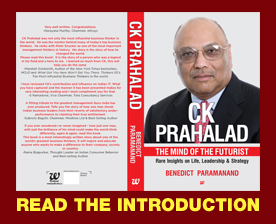by Indroneil
Meditation Myths and Misconceptions
Indroneil is a Human Alchemist & Transformational Coach
reachme@indroneil.com | www.indroneil.com
Google, Facebook and Twitter and many others have embraced meditation and contemplative practices as a part of their corporate culture. Promega Corp., a biotech company in the West, encourages its workforce to go for yoga / meditation sessions on company time, paying rates heavily subsidized by their employer.
Despite the benefits of leading a meditative corporate life and its positive impact on profitability being proven, not much has been heard of companies encouraging such practice amongst its employees, leave alone embracing them as a part of organization’s culture in India – a country from where it is believed contemplative practices like yoga and meditation originated.Despite the benefits of leading a meditative corporate life and its positive impact on profitability being proven, not much has been heard of companies encouraging such practice amongst its employees, leave alone embracing them as a part of organization’s culture in India – a country from where it is believed contemplative practices like yoga and meditation originated.
Having grown up with meditation since my early teens, lived it through my corporate journey of 18 years and integrated it as a part of my practice as a transformational enabler for more than a decade, here’s an attempt to list below the ten most prevalent myths and misconceptions surrounding mediation:
- Meditation does not necessarily mean sitting for a long time, with your eyes closed. You can be meditative while brushing your teeth, having your breakfast, driving your car or even attending a meeting.
- You cannot ‘do’ meditation. Meditation is non-doing. Even in active meditation, where one is required to move, through guidance s/he is made to dissociate from the movement to be a witness, thereby getting into a non-doing state.
- Yoga is not meditation. You do not need to bend your body and twist your limbs to meditate. You can meditate while standing, sitting or even lying down.
- Addictive substances have nothing to do with meditation. They alter your consciousness and mimic the state of expanded consciousness that you may achieve through meditation.
- You do not have anything to achieve, any objective to meet in meditation. Trying to reduce stress through meditation can make you more stressful. Meditating with an objective to attain enlightenment will take you farther, farther away from it.
- Meditation is not consciousness, awareness or mindfulness. It’s a tool or a path to conscious awareness.
- There are many methods of meditation and none of these are better than another. It completely depends on the one who meditates, the guide and ambiance on how effective a method can be.
- Meditation is not necessarily a group activity, needing a lot of gizmos. You can be meditative alone in your own space without any prop, whatsoever.
- Awakening, cleaning or alignment of chakras is not meditation. These are healing techniques with physical implications, having little or nothing to do with awareness, which is what meditation is a path way to.
- There is nothing religious or even spiritual about meditation. You do not need to learn stringent methods and rituals for meditating. You are, as a human, by nature meditative. All you need is a compassionate guide.











Recent Comments